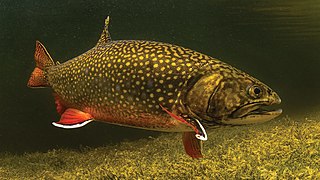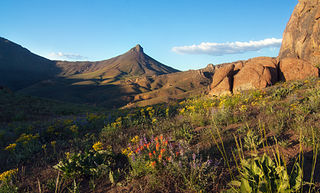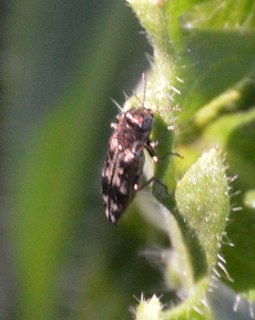
Trout are species of freshwater fish belonging to the genera Oncorhynchus, Salmo and Salvelinus, all of the subfamily Salmoninae of the family Salmonidae. The word trout is also used as part of the name of some non-salmonid fish such as Cynoscion nebulosus, the spotted seatrout or speckled trout.

The brown trout is a European species of salmonid fish that has been widely introduced into suitable environments globally. It includes purely freshwater populations, referred to as the riverine ecotype, Salmo trutta morpha fario, a lacustrine ecotype, S. trutta morpha lacustris, also called the lake trout, and anadromous forms known as the sea trout, S. trutta morpha trutta. The latter migrates to the oceans for much of its life and returns to fresh water only to spawn. Sea trout in Ireland and Britain have many regional names: sewin in Wales, finnock in Scotland, peal in the West Country, mort in North West England, and white trout in Ireland.

The rainbow trout is a trout and species of salmonid native to cold-water tributaries of the Pacific Ocean in Asia and North America. The steelhead is an anadromous (sea-run) form of the coastal rainbow trout(O. m. irideus) or Columbia River redband trout (O. m. gairdneri) that usually returns to fresh water to spawn after living two to three years in the ocean. Freshwater forms that have been introduced into the Great Lakes and migrate into tributaries to spawn are also called steelhead.

Amphizoa is a genus of aquatic beetles in the suborder Adephaga, placed in its own monogeneric family, Amphizoidae. There are five known species of Amphizoa, three in western North America and two in eastern palearctic. They are sometimes referred to by the common name troutstream beetles.

The brook trout is a species of freshwater fish in the char genus Salvelinus of the salmon family Salmonidae. It is native to Eastern North America in the United States and Canada, but has been introduced elsewhere in North America, as well as to Iceland, Europe, and Asia. In parts of its range, it is also known as the eastern brook trout, speckled trout, brook charr, squaretail, brookie or mud trout, among others. A potamodromous population in Lake Superior, as well as an anadromous population in Maine, is known as coaster trout or, simply, as coasters. The brook trout is the state fish of nine U.S. states: Michigan, New Hampshire, New Jersey, New York, North Carolina, Pennsylvania, Vermont, Virginia, and West Virginia, and the Provincial Fish of Nova Scotia in Canada.

The Apache trout, Oncorhynchus apache, is a species of freshwater fish in the salmon family of order Salmoniformes. It is one of the Pacific trouts.

LeConte's thrasher is a pale bird found in the southwestern United States and northwestern Mexico. It prefers to live in deserts with very little vegetation, where it blends in with the sandy soils. LeConte's thrashers are nonmigratory birds that reside in the same territory annually. Although the species has been decreasing in certain areas of its range, in particular California, it still is abundant enough to not be considered for vulnerable status.

Elaphe carinata, the king ratsnake, is a species of Colubrid snake found in Southeast and East Asia.

The Trout Creek Mountains are a remote, semi-arid Great Basin mountain range mostly in southeastern Oregon and partially in northern Nevada in the United States. The range's highest point is Orevada View Benchmark, 8,506 feet (2,593 m) above sea level, in Nevada. Disaster Peak, elevation 7,781 feet (2,372 m), is another prominent summit in the Nevada portion of the mountains.

Autohaemorrhaging, or reflex bleeding, is the action of animals deliberately ejecting blood from their bodies. Autohaemorrhaging has been observed as occurring in two variations. In the first form, blood is squirted toward a predator. The blood of these animals usually contains toxic compounds, making the behaviour an effective chemical defence mechanism. In the second form, blood is not squirted, but is slowly emitted from the animal's body. This form appears to serve a deterrent effect, and is used by animals whose blood does not seem to be toxic. Most animals that autohaemorrhage are insects, but some reptiles also display this behaviour.
Amphizoa davidis is a species of beetle in the Amphizoidae family described by the entomologist Hippolyte Lucas in 1882. The beetle measures between 10.5 and 16 millimeters in length. Its elytra are most notable for lacking a carina on the fifth interval. The pronotum has a lateral margin without lateral bead. The species is only known from the province Sichuan of in especially in China.

Amphizoa insolens is a species of aquatic beetles. It is found in North America from Alaska to southern California.

Class A Wild Trout Waters are the highest biomass class given to streams in Pennsylvania by the Pennsylvania Fish and Boat Commission. They are considered to contain the highest-quality naturally reproducing trout populations in Pennsylvania. The first streams received their Class A Wild Trout Waters designations in 1983. There are now hundreds of such waters, comprising nearly 1,500 miles (2,400 km) of streams. Class A Wild Trout Waters receive certain legal protections. For instance, they are typically classified by the Pennsylvania Department of Environmental Protection as High-Quality Coldwater Fisheries. Most Class A Wild Trout Waters are subject to standard statewide angling regulations by the Pennsylvania Fish and Boat Commission.

Rhipiceridae is a family of cedar beetles, also known as cicada parasite beetles, in the order Coleoptera. Rhipiceridae and Dascillidae form the super family Dascilloidea.
Amphizoa striata is a species of trout-stream beetle in the family Amphizoidae. It is found in North America. It is between 13 and 15 millimeters long. Its front tarsi have a well-developed groove on the posterior surface and grooves bearing a fringe of long hair-like setae. It lives in British Columbia, Oregon, and Washington.

Agrilus lecontei, or Leconte's Brownsville buprestid, is a species of metallic wood-boring beetle in the family Buprestidae. It is found in North America.
Adranes lecontei is a species of ant-loving beetle in the family Staphylinidae. It is found in North America.
Galerita lecontei, the false bombardier beetle, is a species of ground beetle in the family Carabidae. It is found in the Caribbean Sea, Central America, North America, and the Caribbean.
Triarthron lecontei is a species of round fungus beetle in the family Leiodidae. It is found in North America.












